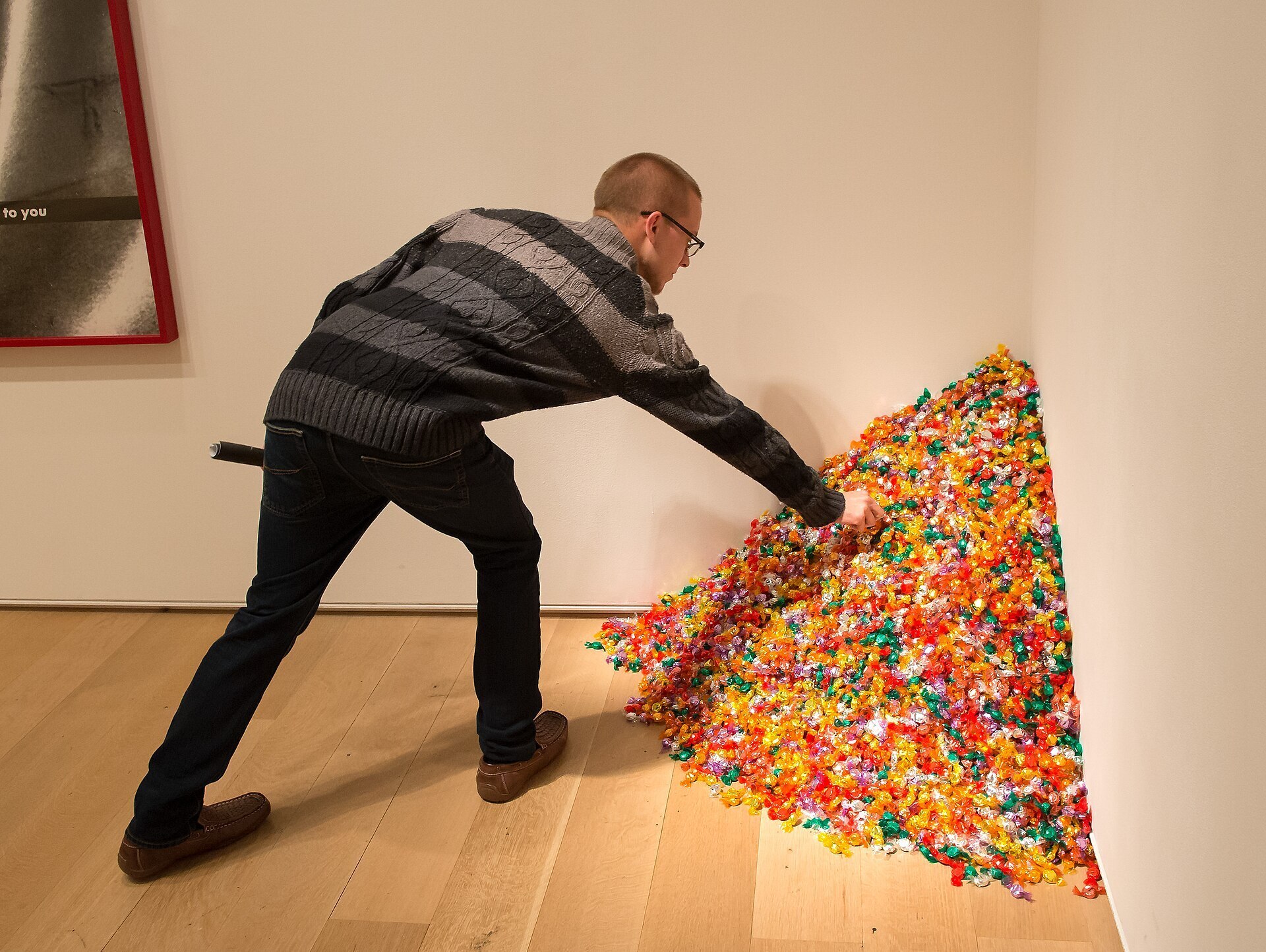I have realized over the years that I am a staunch defender of pretentious modern art. It is very easy for people to look at, say, a big painting of a yellow circle and say, “What makes that art? It’s just a circle.” I once literally screamed at the AGO because I was startled by an installation of mannequins with bird heads. Ultimately, however, the people who put strict boundaries around what defines art are usually proven wrong by history. Monet’s early impressionist art got terrible reviews, and Van Gogh died in poverty. More importantly, art that is unusual can be powerful, if you look beneath the surface.
My favourite example of modern art is by Felix Gonzalez-Torres, a Cuban-American minimalist sculptor. The piece he called “Untitled (Portrait of Ross in L.A)” consisted of piles of candy in museums, all initially weighing 175 pounds. Visitors were allowed to take pieces of candy to eat until the piles dwindled, emulating the act of communion.
175 pounds is the average weight of a healthy adult male, but more specifically, the healthy weight of the artist’s partner Ross Laycock, who died of complications from AIDS in 1991. As visitors take the candy, they participate in the slow deterioration of the installation, echoing the effects of his illness. Gonzalez-Torres himself died in 1996, and this remains his most famous series. At a time when gay artists were censored and AIDS was highly stigmatized, this piece immortalized the legacy of both Felix Gonzalez-Torres and the man he loved.
This is my favourite piece of modern art because it represents how seemingly random works can have depth and meaning, and shows the inextricable connection between grief and love. Art is an act of resistance, and the importance of the work of LGBTQ+ artists cannot be overstated. Because of the AIDS crisis we lost too many of them, and erasure of their art persists today. The Art Institute of Chicago and The Smithsonian were recently critiqued for failing to label this installation as an AIDS memorial, instead encouraging viewers to create their own interpretations without providing them with vital context or even saying Ross Laycock’s name. However, by telling these stories, we can ensure that their legacies are maintained, and that efforts to suppress their artworks fail.
